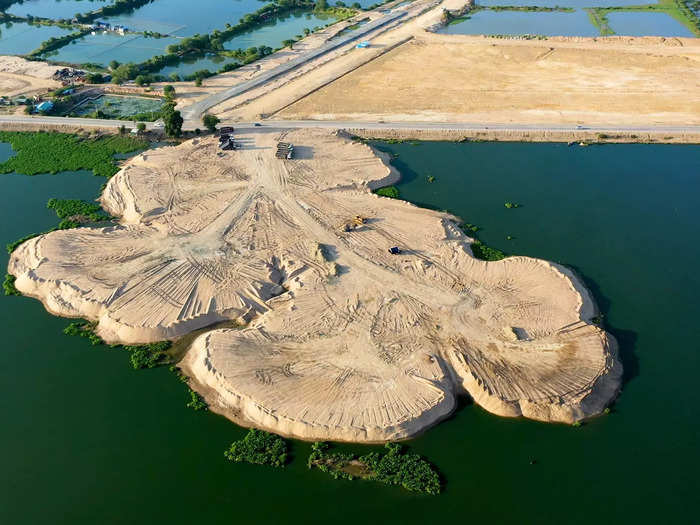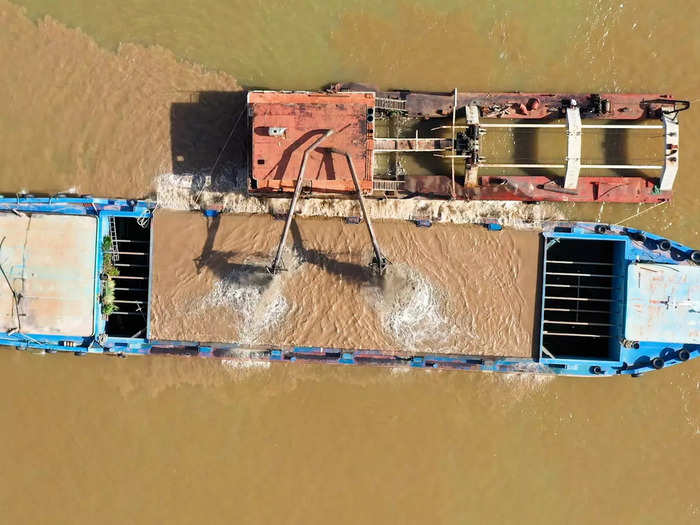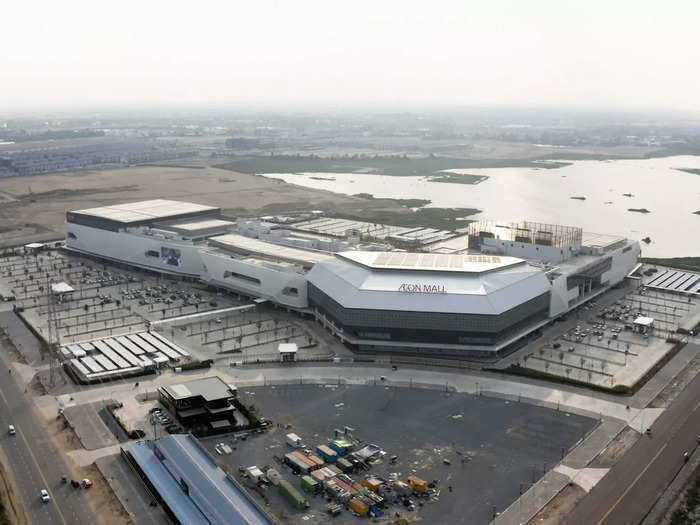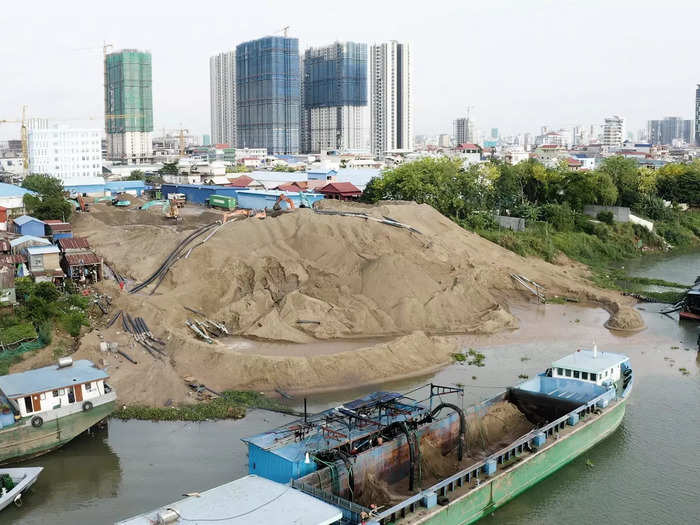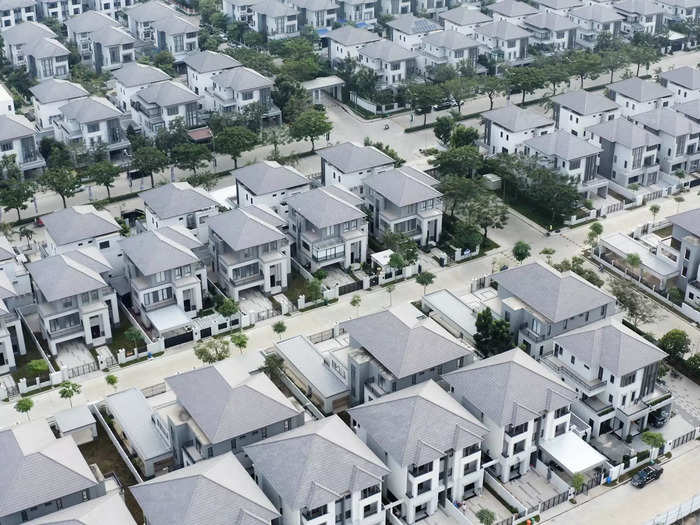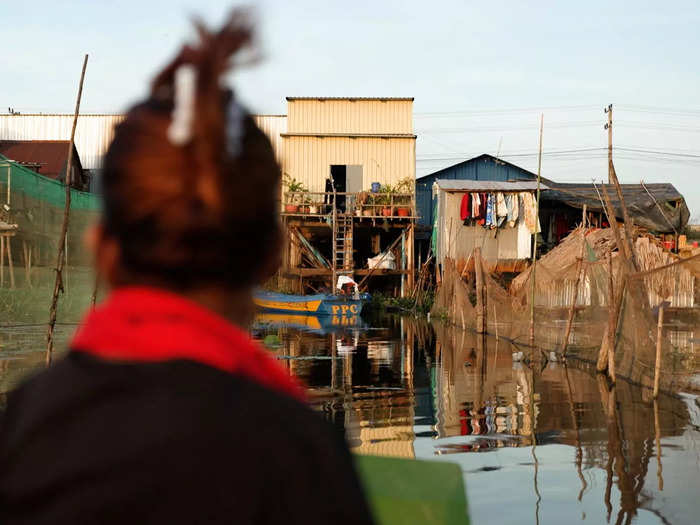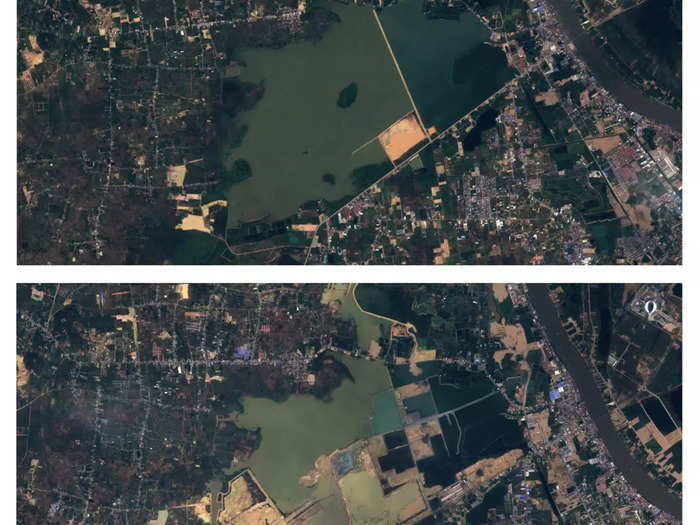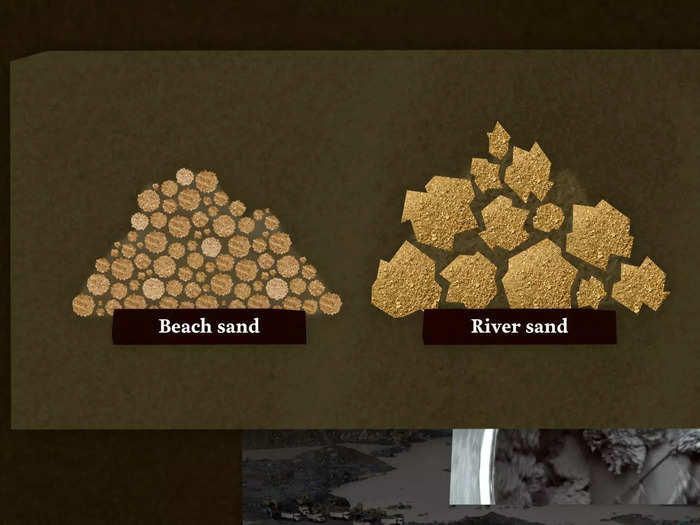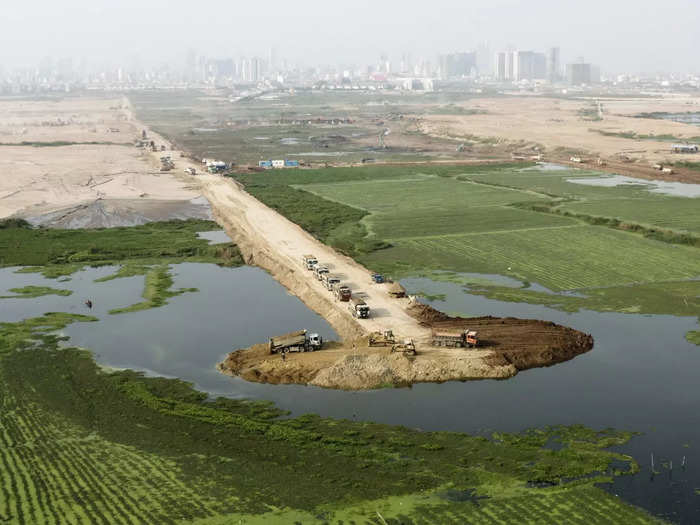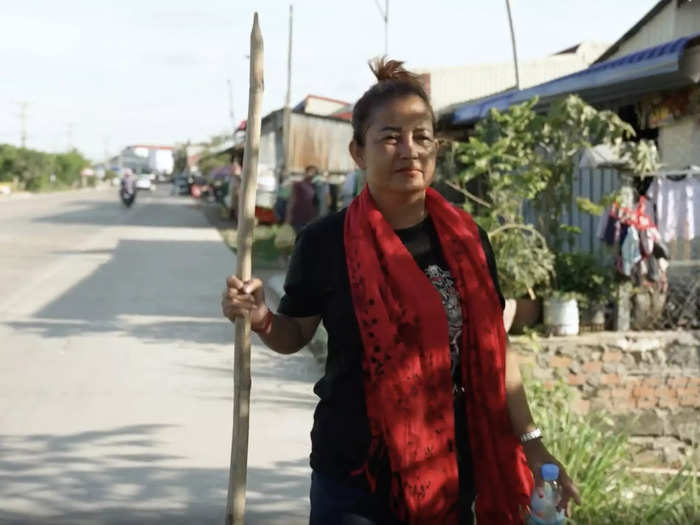Andy Ball
- In Cambodia, sand mining has become a popular industry to support concrete production.
- The influx of sand is threatening the homes of thousands who live along the country's water ways.
"Before the entire lake was decorated by lotus and lotus stem. Now, it's decorated by gravel and sand," said Prak Sophea, one of the many residents in Cambodia who are slowly watching their beloved riverfronts and homes become overrun by growing swaths of sand.
Andy Ball
Large barges are dredging up tons of sand from the river to supply concrete for developing Southeast Asian cities. The sand is exported to places like Singapore, where nearly 50 square miles of land have been added on waterfronts, and Phnom Penh, the capital of Cambodia.
Andy Ball
In Phnom Penh, the government is using the sand to fill in lakes and rivers in order to create land for developing real estate and shopping malls.
Andy Ball
However, thousands of people who have lived and worked on these waterfronts for years are facing eviction as the sand barges grow closer and the government hands their property over to private investors.
Andy Ball
Boeung Tompun was once a lake in Phnom Penh where nearly 1,000 people made a living selling fish near their homes. Now, the lake has been filled in and is occupied by a shopping mall and large gated community.
Andy Ball
Seeing a glimpse of their potential future, Boeung Tamok waterfront residents have taken matters into their own hands by protesting government efforts to develop over their homes and dispossess their families.
"Where there is development, there are tears of citizens," said Boeung Tamok resident Prak Sophea, who has lived on the lakefront for more than 20 years. The government gave large pieces of land near her home to private investors — today, the masses of sand development are only 300 feet away from her door step. Andy Ball
Sophea, along with her neighbors, spends much of her time protesting in an effort to save their homes. Often faced with violence from government authorities during these protests, Sophea and her community asked the UN High Commissioner for Human Rights in Cambodia for support. But the developments have yet to cease.
Prak Sophea shows footage of a protest that turned violent as residents were protecting their housing rights. Andy Ball
Since 2003, private developers and Cambodian officials have filled in 60% of the city's lakes.
Over the years, lakes have lost space to the developing sand land masses. (ABOVE: Cambodian lake in 2018. BELOW: Lake in 2022) Sentinel Hub
The coarse and sharp composition of river sand, compared to looser beach sand, makes it a much sought after commodity in concrete production. That makes the sand a valuable export for Cambodia, but also becomes nearly impossible to track how much is really exported.
June Bang
Between 2008 to 2016, Cambodia reported only $5 million worth of exports to Singapore. However, Singapore declared $775 million in imports during that same period of time. With a lack of transparency in river sand sourcing, it is evident that the barges are harvesting more sand than the river can naturally produce, leading to widespread erosion and unstable river banks along the Mekong.
June Bang
The collateral damage of mass sand mining has been to blame for homes collapsing in Vietnam, increasing the risk of drought, and threatening endangered species. NGOs estimate that, without lakes and wetlands working at full capacity, nearly 1.2 million people could face an increased risk of seasonal flooding.
Andy Ball
For many Cambodian residents, their futures, their livelihoods, and their homes are at stake. The sand mining industry is still increasing in influence, but the waterfront communities are committed to fighting for their rights.
"Although I struggle with the authorities, no matter how many clashes I have, I am not scared," said Sophea. "If I am jailed for fighting for shelter for my children, I am happy." Andy Ball

